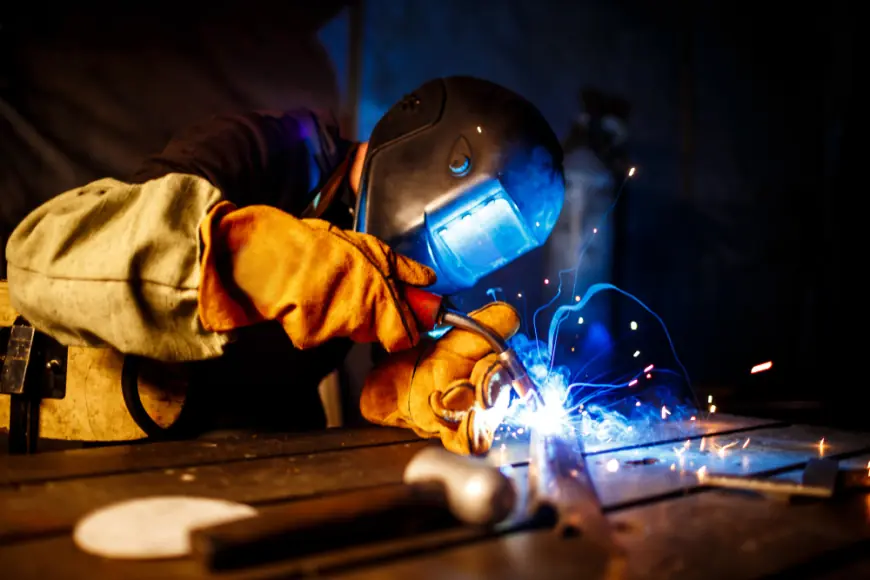The Role of Welding Helmets in Preventing Eye Injuries
Explore how a welding helmet Canada ensures eye safety, shields against sparks and UV rays, and prevents serious injuries for welders at every level.

If you’ve ever been near a welding station, you know the sparks, heat, and flashes aren’t just for show. They’re dangerous—especially for your eyes. That’s why having the right welding helmet Canada workers can rely on isn’t just a matter of preference; it’s a matter of safety and survival. A split-second exposure to welding arcs without protection can leave lasting damage, and yet, many new welders underestimate just how essential that helmet is until it’s too late.
Why Eye Safety Can’t Be Ignored
Welding is one of those trades where the risks are both obvious and sneaky. Sure, you see the flying sparks, the blinding light, the molten metal dripping. But what you don’t always see are the invisible hazards—ultraviolet (UV) and infrared (IR) radiation. These are the culprits behind what’s commonly called “welder’s flash” or arc eye. It feels like someone rubbed sand into your eyes. Painful, tearing, and sometimes debilitating. And here’s the kicker: permanent vision damage is entirely possible after repeated exposure.
A good helmet is basically your shield. Without it, you’re gambling with your eyesight every time you strike an arc.
More Than Just a Dark Lens
A lot of beginners think welding helmets are just glorified tinted shields. Not true. Modern helmets are designed to do a whole lot more. They block harmful rays, protect from sparks, and some even adjust automatically depending on the brightness of the arc. Auto-darkening helmets, for example, switch in milliseconds. You don’t even notice the adjustment—but your eyes certainly do.
Think about the convenience. Before these helmets became mainstream, welders had to constantly nod their heads to drop a fixed lens helmet in place. Not only awkward but also unsafe in fast-paced environments. With the newer tech, you keep both hands on your work, stay precise, and protect your eyes all in one smooth motion.
Comfort Equals Consistency
Here’s something people don’t talk about enough: comfort. Welding helmets can be heavy, hot, and downright clunky if you choose the wrong one. And when you’re uncomfortable, guess what happens? You’re tempted to lift the helmet just for a second to “get a better look.” Big mistake. That single second could mean a flash burn.
High-quality helmets are built with adjustable headgear, lightweight shells, and better airflow. Some even come with grind mode for multitasking. Investing in one that fits you well isn’t just about luxury—it’s about keeping the thing on your head without excuses.
Real-World Stories (That Hit Hard)
Ask around any welding shop and you’ll hear the same type of story. “I only looked for a moment,” or “I thought I didn’t need it for that quick tack weld.” Next thing you know, they’re flushing their eyes out, sitting in the ER, or wearing sunglasses indoors for a week. Ugh, we’ve all either been there ourselves or know someone who has. It’s not a badge of honor—it’s a mistake that could’ve been avoided with a helmet.
Choosing the Right Welding Helmet in Canada
The Canadian market has no shortage of options. From budget-friendly starter helmets to advanced auto-darkening models, there’s something for every skill level. But don’t just pick the cheapest one. Think about lens clarity, shade range, reaction time, and weight. A decent investment upfront saves you not only on medical bills but also on frustration down the line.
And let’s not forget compliance. Worksites across Canada often have strict PPE (personal protective equipment) rules. A certified helmet keeps you in line with safety standards and makes sure you’re protected by law, not just luck.
A Final Thought
Your eyes aren’t replaceable. You can buy tools, replace steel, even scrap an entire project and start over. But your vision? Once it’s gone, it’s gone. That’s why a welding helmet isn’t just another tool in the box—it’s the first line of defense.
So, whether you’re a seasoned pro or someone picking up the torch for the first time, don’t skimp on protection. Explore the different styles, try them on, and pick one that fits your needs. If you’re into hands-on projects already, you might even dive deeper into gear-making or learn from woodworking blueprints for beginners to expand your DIY skills. But when it comes to welding, start with this: protect your eyes first.
What's Your Reaction?
 Like
0
Like
0
 Dislike
0
Dislike
0
 Love
0
Love
0
 Funny
0
Funny
0
 Angry
0
Angry
0
 Sad
0
Sad
0
 Wow
0
Wow
0


















































